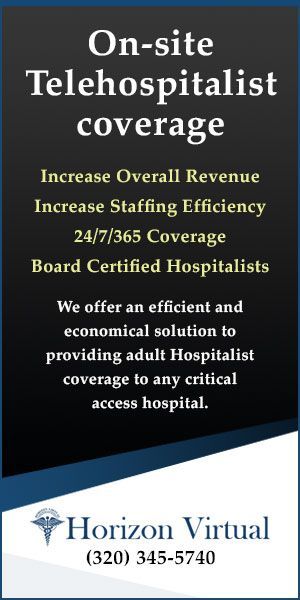he field of medical diagnostics is rapidly evolving with transformative advancements in every field. An area of particular significance involves the integration of artificial intelligence (AI) olfactory sensor technology. AI-powered olfactory sensor technology promises to reshape how we detect and diagnose a wide range of medical conditions, making health care more accessible and efficacious than ever before.
cover story one
AI-Powered Olfactory Sensor Technology
The electronic nose in medicine
By Chris Campbell, CEO
The sense of smell is problematical to investigate with scientific rigor. There are tens of thousands of odors, and it is very difficult to accurately distinguish between them. Research on the olfactory system has been more challenging than that of the other senses, and serious study of an artificial olfactory system began just 40 years ago. Early research showed that odors could be distinguished using four chemical sensors with overlapping selection patterns. The combination patterns are key to the classification, identification and recognition of odors. Since the 1980s, almost all olfactory sensor technologies have consisted of sensor arrays with specific functions for classifying odors. This gave rise to the term electronic nose (e-nose) and a model that imitates the human olfactory recognition system using an array of electronic sensors, or an artificial olfactory system. This new technology allows us to look at the fingerprints of breath.
Ongoing research proved it was possible to build an artificial olfactory system that imitates the natural olfactory structure by combining gas sensing and data processing technologies. This work was used initially in food sciences to detect spoilage and then in environmental and industrial settings to prevent exposure to human hazards. In both cases accuracy would reach 95% levels. As environmental pollution problems continue to grow, the detection of toxic and harmful gases is becoming progressively more important.
This work is indeed the future of medicine.
It followed naturally that this technology could be used for the detection of biomarkers in medical diagnosis and screening. This led to the discovery and identification of reliable disease-specific volatile organic compounds based on repeatable, accurate analysis of trace-level gaseous analytes mainly in breath samples. Using the electronic nose for diagnosis of diseases is based on detection of volatile organic compounds (VOCs) and their profiles. VOCs form as a result of disease processes and can be analyzed by noninvasive methods such as sampling exhaled breath (EB) and exhaled breath condensate (EBC). This work is indeed the future of medicine, and through revolutionary advances in analytical chemistry and AI, a compact, portable and cost-effective alternative to lab diagnostics can fit the palm of your hand.
The Future is Now
Our company, Simpli-Fi, is one of many working in the emerging field of olfactory sensor technology. We concentrate on health care and partner with Provectus, an AI consultancy and solutions provider serving a wide range of industries. We use a platform that incorporates biometric sensors coordinating pulse oximetry, ECG and temperature to enhance accuracy as we analyze breath. Our automated AI-powered olfactory sensor leverages advanced AI algorithms to analyze the complex chemical compositions of breath, sweat and other bodily emissions, detecting minute changes indicative of various health conditions.
The potential benefits of this technology are vast. One of the most promising aspects is its ability to detect serious illnesses and chronic conditions at an early stage, where intervention can be most effective. Conditions such as cancer, diabetes and neurological disorders often present subtle changes in the body’s chemical emissions long before traditional diagnostic methods can detect them. By identifying these changes early, patients can receive timely treatment, potentially improving outcomes and survival rates.
Early detection is critical in managing chronic conditions and preventing the progression of serious illnesses. Early detection of cancers such as lung or ovarian cancer significantly increases the chances of successful treatment. Similarly, detecting prediabetic conditions can lead to lifestyle changes that prevent the onset of full-blown diabetes.
Innovations and Advances
We have made game-changing strides in the development and refinement of AI-powered olfactory sensor technology. Imagine integrating a full-scale chemical analysis lab into a sensor chip smaller than a dime. This revolutionary new diagnostic tool combines state-of-the-art artificial intelligence models with olfactory sensing capabilities to provide real-time chemical analysis. The integration of multiple sensing technologies ensures a comprehensive and precise diagnostic capabilitythe requirements on the CMS web site for AHCaH.
Another advancement incorporates a telehealth application offering continuous health care access to those in need. It offers non-invasive personalized remote monitoring. It is designed to make health care more accessible and efficient, providing vital health information to physicians in real time. In the comfort of their own homes, your patients could simply breathe into a hand-held device sending you data to detect early signs of illness or worsening chronic conditions. This could lead to more proactive health care, with patients seeking medical advice and intervention at the earliest signs of trouble. For patients who already have a diagnosed chronic condition this kind of remote check-up can be invaluable in detecting and responding to changes in health status before they become cause for hospitalization, or worse.
Evolution of a Revolution
Olfactory sensory neurons are located in a small patch of tissue high inside the nose and connect directly to the brain. As with other senses, some people have a very highly developed sense of smell and can differentiate clearly among very similar odors or be very sensitive to certain odors. Some people have a very dull sense of smell and although smell disorders have been identified and otolaryngology can treat some of them, the correlation between breath and smell has yet to receive the level of study found in audiology and ophthalmology.
Utilizing breath as a diagnostic tool is most commonly known through the 1930s’ invention of the Breathalyzer, which did not become widely viable until the 1950s. Understanding the importance in being able to use data provided by breath for medical treatment, traditional analytical methods, such as gas chromatography coupled with mass spectroscopy, have been developed. They are very accurate, reliable and able to identify different substances in a sample, but these instruments are costly, complex, bulky and not used for as wide a spectrum of diagnosis as they might be adapted to achieve. Additionally, they are very limited in their ability to provide point of care (PoC) tests, which is very important in that most patients do not have access to such analytical devices. Furthermore, test results can take days and require handling by personnel with specific training. The benefits of PoC diagnosis achieved by the small dimensions, relatively low cost and expanded range of analysis make this new technology well worth further development.
Imagine integrating a full-scale chemical analysis lab into a sensor chip smaller than a dime.
Current Research
Olfactory sensor technology is currently being explored in several research projects and clinical applications. One notable project involves using the sensors to detect early-stage lung cancer through breath analysis. Preliminary results have shown promise, with the technology accurately identifying cancerous changes in breath samples. Another project focuses on monitoring glucose levels in diabetic patients through sweat analysis. This non-invasive approach could revolutionize diabetes management, providing continuous monitoring without the need for frequent blood samples.
We are currently conducting preclinical trials to further validate the efficacy of olfactory sensor technology. These trials involve diverse patient populations and aim to establish robust protocols for integrating the technology into routine medical practice. These preclinical trials are designed to test the sensors’ accuracy in detecting a range of conditions, including respiratory infections, metabolic disorders and even neurological diseases. Initial results are promising, demonstrating high sensitivity and specificity in identifying disease markers.
Another trial we are conducting involves health monitoring, diagnostics and human performance enhancement. Collaborating with Neuro Force One (NF1), a sports science and performance enhancement company, the trial conducts holistic analyses of biological responses to various stimuli, including exercise, nutrition, stress and environmental factors. Using NASA-licensed research technologies we monitor elite athletes’ health status and performance metrics. Advanced carbon nanotube-enabled olfactory analysis integrates exclusive NASA research technologies with proprietary algorithms to measure and analyze biometric measurements obtained from human breath. Validation of precise breath analytic readings correlates with human health, chronic diseases, nutrition, hydration deficiencies and human performance achievements.
Challenges
While the technology holds great promise, awareness and acceptance among medical professionals are challenges. One of the primary hurdles is the need for extensive clinical validation to gain the trust of health care providers. Additionally, integrating this technology into existing diagnostic workflows requires specific training and rethinking of traditional paradigms.
Another challenge is obtaining insurance coverage for tests conducted using olfactory sensor technology. As with any new diagnostic tool, demonstrating cost-effectiveness and clinical utility is crucial for securing coverage from insurance providers.
Looking Ahead
Olfactory sensor technology will not replace existing diagnostic methods, but it most clearly will complement and enhance them. It will pave the way to concurring early diagnosis and treatment, yielding huge savings from conducting unnecessary tests.
It can be integrated with current diagnostics, for instance, by using olfactory sensors alongside traditional imaging and laboratory tests, providing additional data points that improve diagnostic accuracy. This multi-modal approach could lead to more comprehensive and accurate diagnoses, ultimately improving patient outcomes.
Mainstream Usage
The path to mainstream usage of this technology involves several steps, including continued research, clinical validation and regulatory approval. Ongoing research and preclinical trials will continue to build the evidence base needed to gain acceptance among health care providers and regulatory bodies. Achieving regulatory approval from the FDA is crucial. This process can be lengthy, but it is essential for ensuring the safety and efficacy of the technology.
Once approved, the technology can be gradually introduced to the market, starting with specialized applications in hospitals and clinics. Over time, as the technology proves its value, it can be integrated into routine medical practice and eventually into home health care devices.
Conclusion
AI-powered olfactory sensor technology represents a groundbreaking advancement in medical diagnostics. By harnessing the power of AI to analyze the body’s chemical emissions, this technology offers the potential for early detection and monitoring of a wide range of conditions. While challenges remain in terms of acceptance, validation and regulatory approval, the future of this technology is bright. With continued innovation and research, it can transform the landscape of medical diagnostics, bringing us closer to a future where proactive and personalized health care is the norm.
For medical professionals in Minnesota and beyond, staying informed about these advancements is crucial. As the technology evolves and becomes more integrated into clinical practice, it will be essential for MDs to understand its capabilities, benefits and potential applications. Embracing these innovations will not only enhance patient care but will also position health care providers at the forefront of the next wave of medical technology.
Advances in both sensors and AI algorithms have resulted in a highly effective diagnostic tool that holds great promise for the future of medical diagnostics. The continuous improvement of this technology ensures its potential to revolutionize health care by providing detailed olfactory profiles that can be correlated with specific diseases, paving the way for more accurate and early diagnosis.
By keeping abreast of these developments, medical professionals can be better prepared to incorporate cutting-edge diagnostic tools into their practices, ultimately improving patient outcomes and advancing the field of medicine.
Chris Campbell is CEO of Simpli-Fi Automation, designing and producing a range of integrated health and environmental monitoring systems for the health care industry.
MORE STORIES IN THIS ISSUE
cover story one
AI-Powered Olfactory Sensor Technology: The electronic nose in medicine
By Chris Campbell, CEO
cover story two
Colorectal Cancer: An alarming increase among younger adults





















